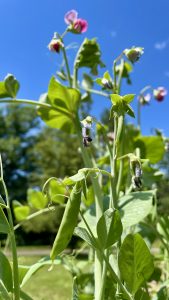
Maybe 2025 finds you feeling some disquiet? What better way to ground yourself than pushing seeds into soft earth and watching green shoots emerge? What better reward than a sweet crunchy sugar snap pea, cool before the morning sun warms it, sparkling with dew in the moment between snapping off the vine and popping into your mouth? What better way to rebuild community than inviting friends, neighbors, or strangers to enjoy some of your harvest.
Read up on our DIY instructions to build a raised garden bed, or contact us about ordering a kit from Bountiful Boxes.

